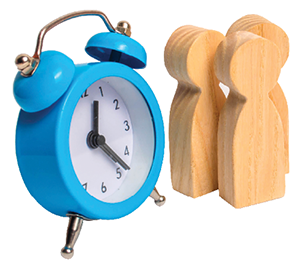 The tight labor market has cast a shadow over the U.S. economy. With unemployment rates at historical lows and more jobs open than available workers, the convenience retail industry has not been immune to its impacts.
The tight labor market has cast a shadow over the U.S. economy. With unemployment rates at historical lows and more jobs open than available workers, the convenience retail industry has not been immune to its impacts.
The demand and competition for workers is fierce. Convenience stores have found creative solutions for attracting and retaining employees beyond higher wages. People now want more—they want autonomy over their time and the flexibility to decide when they work.
“Many people get into retail to begin with because they need flexibility to attend classes or take care of kids,” said Melissa Wong, co-founder and CEO, Zipline, which offers scheduling and shift-swapping as part of its operational platform. “As a result, brands looking to attract and retain employees are focusing on giving them more of what they want, and that’s flexibility.”
According to Sanish Mondkar, CEO and founder of Legion, a workforce management platform company, employees want three things when it comes to scheduling. The first is flexibility, and the second is self-service tools—giving employees the ability to manage schedule changes without needing a manager’s assistance to swap, drop or add shifts.
Thirdly, Employees want a modern, digital scheduling experience. For example, allowing them to use their mobile device to access and manage their schedule, along with chat and messaging capabilities.
“Employees’ need for flexibility has increased and continues to do so year over year,” said Mondkar. “This reflects many things—doing more than one job to make a living is quite common now, but this can result in schedule conflicts. Also, gig jobs offer flexibility, which has increased employees’ expectations in general.”
THE FLEXIBLE SCHEDULE
The Hub Convenience Stores, based in Dickinson, North Dakota, uses a flexible scheduling tactic and pulls from a nonconventional labor pool to perform tasks that have been impacted by labor constraints.
During the summer months, “We’re pushing 1,200 individual beverages per day in some stores. That’s a lot to restock, and it’s hardto absorb that with the existing labor that we schedule on a typical basis,” said Jared Scheeler, CEO of The Hub Convenience Stores and former NACS chairman.
“In past years, we were able to just hire more people, but [in 2022] it was harder than we’ve ever had it,” said Scheeler.
The Hub’s solution? Hire local high school students to restock the cooler and help with the company’s donut-making process. The students are scheduled each week, but The Hub gives them full autonomy over when they can come in to fulfill their tasks. They can also swap shifts.
“We still schedule the ideal, optimal person but with an understanding that it doesn’t matter when they come in, just as long as the job gets done,” said Scheeler. “And if they need somebody to work for them, and they want to get it covered on their own, they’re welcome to do that.”
For the three-hour cooler shifts, the students don’t have to work three consecutive hours. It can be an hour and a half in the morning and the remainder in the afternoon, Scheeler said. The donut shifts have a smaller window of when the job can be completed, but there is still flexibility.
“[The students] like the freedom,” said Scheeler. “They like having the ability to work but still fulfill their [school and athletics] obligations.
“It’s been incredibly successful for us,” he continued. “[It] takes a big weight off of our shoulders in a way we probably never imagined for an experimental method of scheduling.”
Knoxville, Tennessee-based Pilot Company allows its employees to trade shifts, even after the schedule has been posted.
“With the increasing need for flexibility, especially through the pandemic, and a tightening labor market, we identified this as one of the next steps to improve our team members’ experience,” said Paul Shore, chief people officer for Pilot Company. “We know things come up, and this kind of flexibility allows our team members to work together to cover shifts.”
Shore said the process creates a better employee and customer experience by incorporating flexibility based on each store’s specific needs.
“We believe that as a hospitality company, we must focus first on providing an exceptional team member experience in order for them to provide a great guest experience,” he said.
 THE SHORTENED WORKWEEK
THE SHORTENED WORKWEEK
A recent survey by Ernest & Young found that 40% of companies surveyed have either started using a four-day workweek or are in the process of implementing one.
“A prolonged, tight labor market and changing work patterns have employers doing all they can to attract and retain their workforce,” noted Ernest & Young.
One convenience retailer embracing this flexible option is Powell, Tennessee-based Weigel’s, which operates 72 stores in East Tennessee. Full-time, hourly employees have the option to work four-, eight-or 10-hour shifts, and they can choose the days they work as business allows.
Kurt Weigel, recruiting manager for Weigel’s, “really recommends the four-day workweek. The employees love it, he said. “They report better quality of life, work-life balance and being more refreshed when it is their day to work.”
The main driver for Weigel’s decision to implement this policy was employee retention. After testing the shortened workweek in one district, the company saw turnover reduce by 45%, as well an increase in the dependability of workers and improved store morale. The company rolled out the benefit to all stores in August 2022.
Quick-service restaurants pull from the same labor pool as convenience retailers, especially those that have prepared food programs.
One Miami, Florida, Chick-fil-A location, owned and operated by Justin Lindsey, offers its full-time workers an even shorter workweek—just three days. Workers also have seven consecutive days off a month and only have to work two Saturdays a month. (Chick-fil-A locations close on Sundays.)
The three-day workweek works by separating employees into two “pods,” according to Lindsey. One pod works Monday through Wednesday, and the second works Thursday through Saturday. They stay on the same schedule for two consecutive weeks. On the third week they rotate.
“[The three-day workweek] takes out a lot of guessing. It gives them flexibility to plan their life and not be so tied down with work,” said Lindsey.
Employees don’t move from pod to pod, so they are always working with the same co-workers, which Lindsey says has led to increased leader development, employee morale and retention, a cleaner location and more consistent foodservice.
The pod system also eliminates staff transition periods, where the morning leaders would leave the store and the evening leaders would begin work. Lindsey admits that during those periods “things were a mess” until the three-day workweek was implemented.
“Where traditionally we would see drops in sales during transitions, we’ve seen massive increases in sales,” said Lindsey.
The three-day workweek has also enabled the restaurant to retain non-managerial, fulltime employees, which were a sect of workers Lindsey struggled to keep.
“I could never figure out a way to retain those team members because eventually the pay didn’t matter. It would just kind of wear off over time,” he said.
THE BUILD-YOUR-OWN SCHEDULE
Southern convenience-store chain Sprint Mart, with stores in Mississippi, Alabama and Louisiana, is piloting a scheduling tactic at two of its 103 locations that allows its hourly employees to build their own schedule. The company posts available shifts for the week on its online scheduling platform, where staff can request the shifts they want. The manager at the location either approves or denies the request. Denials rarely happen, and schedules are posted 10 days in advance.
“It’s an effort to try and bridge the gap between full gig work and the more industrial-era idea of ‘we schedule you when you should work and you show up,’” said Chris McKinney, chief human resources officer for Sprint Mart.
Managers have the ability to set parameters within the scheduling platform that allow workers to pick up shifts within certain constraints. For example, there can be restrictions in place that prohibit a staff member from working above a certain number of hours, avoiding overtime pay.
McKinney said one concern was that both locations had a few longtime employees who did not want to alter their schedules. In response, Sprint Mart created a system that provides the managers with a prepopulated schedule each week, giving the seasoned employees their desired shifts. The remaining open shifts are posted on the platform for staff to pick up.
If a shift is posted but doesn’t get picked up by an employee, it’s the manager’s call to decide if that shift is actually needed based on labor budgets and how busy the location will be during the shift.
“Three to four weeks after it started, we received pretty positive feedback from those stores, and there has been no desire to revert back at those locations,” said McKinney. “Once the flexibility is offered, they tend to really grab onto it.”
McKinney encourages convenience retailers to embrace the notion of flexible scheduling because competitors are already offering this benefit.
He also notes that this is a free benefit retailers can offer their employees. There is the indirect cost of a scheduling platform, but many companies already have one.
“You can offer what is viewed as the new way to work, a tremendous benefit to employees for really little to no cost. It just requires a different leadership mindset,” said McKinney.
[The three-day workweek] takes out a lot of guessing. It gives them flexibility to plan their life and not be so tied down with work.”
What Applicants Are Seeking

Job applicants agree that wages and benefits are important. But what else do they care about?
NACS surveyed potential job applicants asking them to rank a series of 20 job attributes using maximum differential (MaxDiff) scaling. MaxDiff provides a better understanding of how the attributes rank and their strength.
With MaxDiff ranking, the average for all responses is 100 points. Anything more than 100 is considered important to applicants, and anything above 150 points is very important.
NACS found that the focus on pay and benefits attracts applicants, which is not surprising:
1. Good starting salary (234 points)
2. Stable pay with regular raises (233 points)
3. Benefits like health insurance or retirement plans (202 points)
4. Paid time off for vacation and holidays (164 points)
5. Makes me happy (150 points)
However, salary alone doesn’t tell the entire story. Applicants also want to grow their career, and yes, they also want flexibility:
6. Has a clear, achievable path for advancement (97 points)
7. Flexible hours (93 points)
8. Relates to my interests (91 points)
9. Convenient hours (87 points)
10. Consistent schedule (83 points)
11. Positive interactions with coworkers/colleagues (76 points)
Convenience store jobs that provide flexibility, such as multiple shifts and different types of work, also scored well:
12. Chance to help others (66points)
13. Short commute time (65points)
14. Positive interaction with customers/clients (60 points)
15. Offerson-the-job training or technical skills (59 points)
16. Employer helps pay to further education/develop specialized skills (55 points)
17. Comfortable workspace (54 points)
18. On-the-job-perks or employee discounts (54 points)
More insights that can help your employment offers tie into what applicants care about most are available in the free online NACS resource, How to Attract Employees, available at www.convenience.org/Topics/HumanResources.